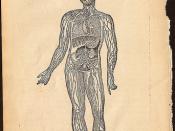Maybe you didn't hear about elephantiasis yet, and there comes the question what is elephantiasis?
Well, it's a disease also called Lymphatic filariasis caused by microscopic worms. This worm stores inside our body and after years of having the disease inside your body the symptoms start to shown on your skin. Lymphatic filariasis is a leading cause of permanent and long-term disability worldwide. People with the disease can suffer pain, disfigurement, and sexual disability. Communities frequently shun women and men disfigured by the disease.
It affects over 120 million people in 80 countries throughout the tropics and sub-tropics of Asia, Africa, the Western Pacific, and parts of the Caribbean and South America.
We choose this topic because we think that elephantiasis is a disease not very common in our population, and also in many countries like United States, because this disease doesn't spread in countries of North America.
We also believe that it would be hard for the people who get infected with Elephantiasis because they suffer a lot; the malformations on their bodies are horribles and deteriorate the entire life of many peoples.
This disease has become disgusting to other people, because it not just affects our circulatory system, it also affects our physical appearance and it becomes a real problem for the people who suffer it, and that's the reason why many people with this disease are forced to hide.
The most cases of Elephantiasis are registered in Africa, when some people for reasons of ignorance or poorness doesn't treat this disease on time, and this is when the big problem comes; the parts of his body started to inflamate and if they doesn't receive medical attention they'll possibly die.
Elephantiasis is best known from dramatic photos of people with grossly enlarged or swollen arms and legs. Elephantiasis, also known as lymphatic filariasis is a sickness caused by some worms called Brugia malayi, and B. timori, all of which are transmitted by mosquitoes. This sickness is most commonly found in African nations. Lymphatic filariasis has currently affected 120 million people worldwide, and 40 million of these people have serious disease.
When an infected mosquito bites a person, he may inject the worm larvae, called microfilariae, into the blood. This worm reproduces inside the body and it spreads for a long time, after years of the infection appears the first symptoms.
Elephantiasis is known to affect the arms and legs of a person, but it also affects other parts of the body like the trunk or head. Another common characteristic of the elephantiasis is that the skin usually develops a thickened, pebbly appearance and may become ulcerated and darkened. Elephantiasis may also affect the male and female genital organs. In a male, there may be enlargement of the scrotum, and the penis may be retracted under skin. In the women the external parts of the genital organs may also be affected by elephantiasis. A long, tumorous mass covered by thickened and ulcerated skin may develop between the thighs. There may also be an enlargement of the lymph nodes of the legs.
Causes
The extreme enlargement of the limbs and other areas of the body characterized by elephantiasis is the result of obstruction of the lymph flow and possibly of blood circulation. This and the currently attack from the infection to the body causes the inflammation. When the lymphatic obstruction is large enough, back pressure in the lymphatic channels produces dilation of the superficial vessels, resulting in extreme swelling. Without medical intervention, the cycle continues until the affected area gets much enlarged. This disease may cause the death.
Related Disorders
Hereditary Lymphedema. - is a genetic disorder of the lymphatic system. Major symptoms may include swelling of the tissue under the skin resulting from obstruction, destruction or underdevelopment of lymph vessels and accumulation of excessive lymph fluid.
Secondary Lymphedema. - is a disorder of the lymphatic system resulting from infection. Symptoms may include sudden onset, chills, high fever and the presence of a red, hot, swollen leg.
Filariasis. - is a disorder spread to man by mosquito bite. Major symptoms may include chills, fever, headache and elephantiasis.


